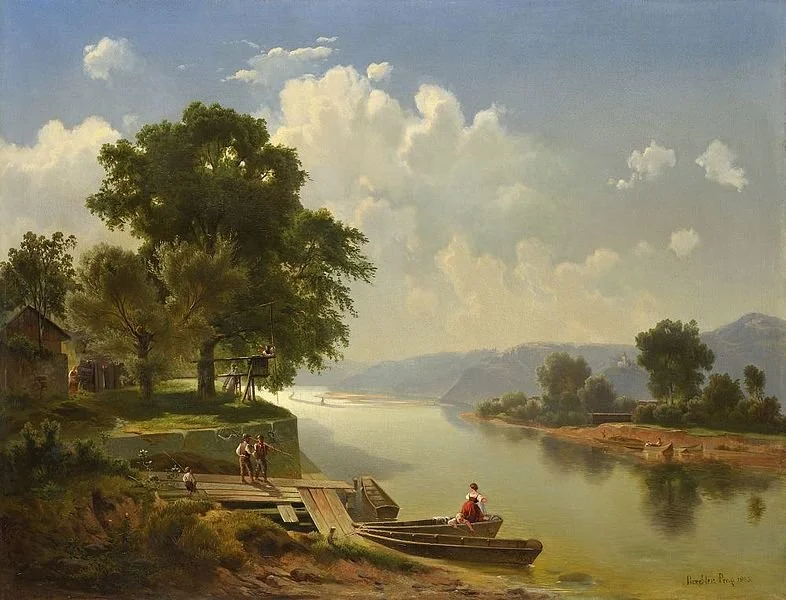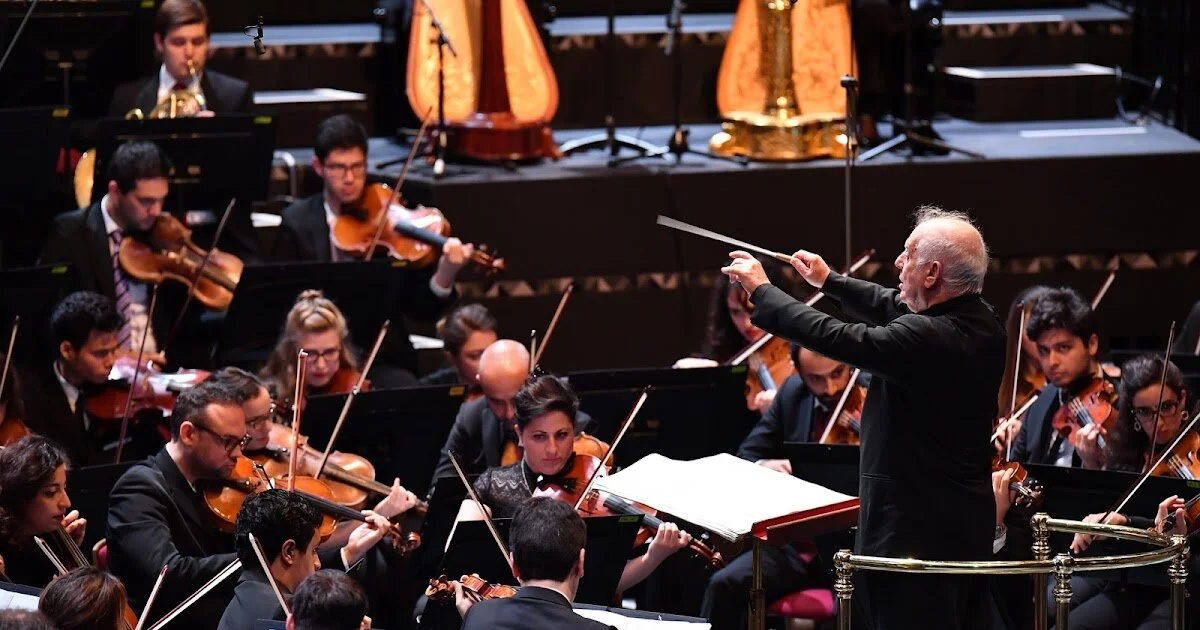What’s in a Song
Music Appreciation: Spring Semester 2022
Our music listening studies will focus on a question each month about an aspect of music. In the process, we’ll learn about composers beyond Bach, Beethoven and Brahms—the composers you may have never heard of but are sure to love. New music for listening will be posted each month with the most recent examples listed first.
What is a band?
Bands are comprised of a group of instrumentalists that play together in a concert setting or marching in formation. The ensemble (group) will often include woodwinds, brass and percussion, but not always. Strings are not typically part of a band. Marching bands have their origins in the military, but now play a significant role in school music programs.
“Country Gardens” was composed by Austrailian-born Percy Grainger (1882-1961) and has a light, cheerful sound.
John Philip Sousa (1824-1892) is known for his patriotic American military marches.
What is a cantata?
A cantata is a composition for vocal soloists, choir and orchestra that is short by classical standards—usually around 20 minutes. It is similar to an opera in that it tells a story through song, but it is unlike an opera, in that a cantata doesn’t have staging. There are no backdrops, costumes or movement on stage.
Carmina Burana by Carl Orff
“O Fortuna” from Carmina Burana is one of those pieces that everyone recognizes but rarely knows the name. Its high energy and dramatic sound make it a popular choice for use in movies and commericials. The cantata was written by Carl Orff in 1937 and inspired by 13th century songs and poems that were disoverd in Beuren, Germany in 1803.
Cantata No. 208 by J.S. Bach
“Sheep May Safely Graze” from J.S. Bach’s Cantata No. 208 is frquently performed as a instrumental piece today. However, it was originally a choral piece. Bach was tasked with writing a new cantata for church services every week. He was well-known for his incredible work ethic.
What is an opera?
In Western musical tradition, an opera is a classical form of music that tells a story though vocal pieces accompanied by orchestra or small ensemble. It is similar to a play, but the dialogue is set to music. Many operas are written in Italian as Italy is considered the birthplace of opera.
Some opera music has a life of its own outside of the program for which it was originally written. The Studio will take a look at two popular pieces that have been featured in movies and in other media.
“Ride of the Valkyries”
Composer Richard Wagner wrote operas celebrating German and Norse folklore. The music sets the stage for Act III of The Valkyrie, where the women warriors ride down from the mountain top to carry the bodies of fallen heroes to Valhalla, the home of the Gods.
Can you hear the sound of horses galloping?
Image left: “Ride of the Valkyries” by William T. Maud (British, 1865 – 1903)
Overture to Carmen
Georges Bizet composed the opera Carmen in 1875 and its infectious melodies have been thrilling audiences ever since. The overture occurs at the very beginning and provides a sample of music that follows.
Image: from Toledo Opera’s 2019 production of Carmen
Just for fun . . .
What is program music?
Program music is music that tells a story. This is different than absolute music where the composer doesn’t have a specific story or scene in mind when writing the music. Program music was especially popular in the Romantic Era and and is generally written for orchestra.
There are four types of program music:
Program Symphony - concert piece with multiple movements
Concert Overture - single-movement concert piece often with a literary theme
Tone Poem or Symphonic Poem - single-movement piece that expresses a poetic idea, suggests a specific scene or mood
Incidental Music - background music for a play or a sound track for a film
“Music is the universal language of mankind.”
Program Symphony
A program symphony is a concert piece with multiple movements. The image to the left is of the Grand Canyon mules that carry riders along the trails. Ferde Grofé composed the Grand Canyon Suite, a piece with five movements each depicting some aspect of the Canyon. Can you hear the sound of the burros in the movement “On the Trail”? What else do you hear?
Concert Overture
The 1812 Overture by Pyotr Tchaikovsky is an example of a concert overture. It tells the story of the defeat of Napolean’s army by the Russians in 1812. The piece includes the motifs from the French National Anthem and Russian folks songs and hymns. It culminates in a splashy ending complete with cannons!
Tone Poem
Bedřich Smetana’s The Moldau is a tone poem depicting the Vltava river(Czech for Moldau) which starts in the mountains of the Bohemian Forest, through the Czech countryside, to the city of Prague.
Incidental Music
Edvard Grieg wrote the incidental music, or “soundtrack,” for Henrik Ibsen’s play Peer Gynt. The composition has enjoyed worldwide popularity separate from the play and contains many iconic melodies. “In the Hall of the Mountain King” occurs at the point in the story where Peer, the hero, has insulted the trolls and the Mountain King. You can hear Peer trying to sneak away from the angry king and the chase that follows. Listen for the ending where the king throws Peer out of the castle and slams the door behind him with an abrupt THUD.
What is a symphony?
A symphony is a complex classical composition written for orchestra usually with 3 or 4 movements (distinct sections). The piece will use a variety of instruments but almost always strings (the violin family of instruments).
The image to the left is Gustavo Dudamel, Conductor and Music Director of the LA Philharmonic Orchestra. He is known for his enthusiasm in conducting.
“The conductor of an orchestra doesn’t make a sound. He depends, for his power, on his ability to make other people powerful.”
Daniel Barenboim conducts Beethoven’s 5th Symphony at the BBC Proms 2012
What the conductor does
Conductors help the orchestra play together as one—starting and ending together, keeping the same tempo, bringing out the melody and supporting the melodic line. Learn about what it’s like to be a conductor from GRAMMY award-winning conductor JoAnn Falletta.
Symphony No. 1, 3rd movement by Florence Price
Florence Price (1887 - 1953)
American composer Florence Price incorporated the sounds of her West African heritage, the “Juba Dance,” into the 3rd movement of her Symphony No. 1. The effect is a joyful, happy sound. Find out more about the composer here.
What is a concerto?
A concerto is a classical piece of music written for solo instrument accompanied by an orchestra. Often it will have several movements or sections that make up the entire piece.
Concerti (plural of concerto) are very dramatic and demonstrate the soloist’s virtuosic ability.
The image to the left is Alice Sara Ott and the Berlin Philharmonic.
“It’s the group sound that’s important, even when you’re playing a solo.”
Khatia Buniatishvili plays Grieg’s Piano Concerto in A minor
There’s a typewriter concerto?
The solo instrument for a concerto doesn’t have to be a piano or guitar or violin. It could be a typewriter! Take a listen to this playful piece by American composer Leroy Anderson. And if you don’t know what a typewriter is, watch “Kids React to Typewriters” to learn more.
The Typewriter by Leroy Anderson
What is a typewriter?
Dazzling performances
Playing a concerto is very demanding for the soloist as the pieces quite long and technically difficult. In addition, the soloist must be strong enough to project their sound above the orchestra. Of course, the conductor must be careful not to let the orchestra overpower the soloist.
Concierto de Aranjuez for Guitar and Orchestra by Rodrigo
Tchaikovsky’s Piano Concerto No. 1 played by Anna Federova












